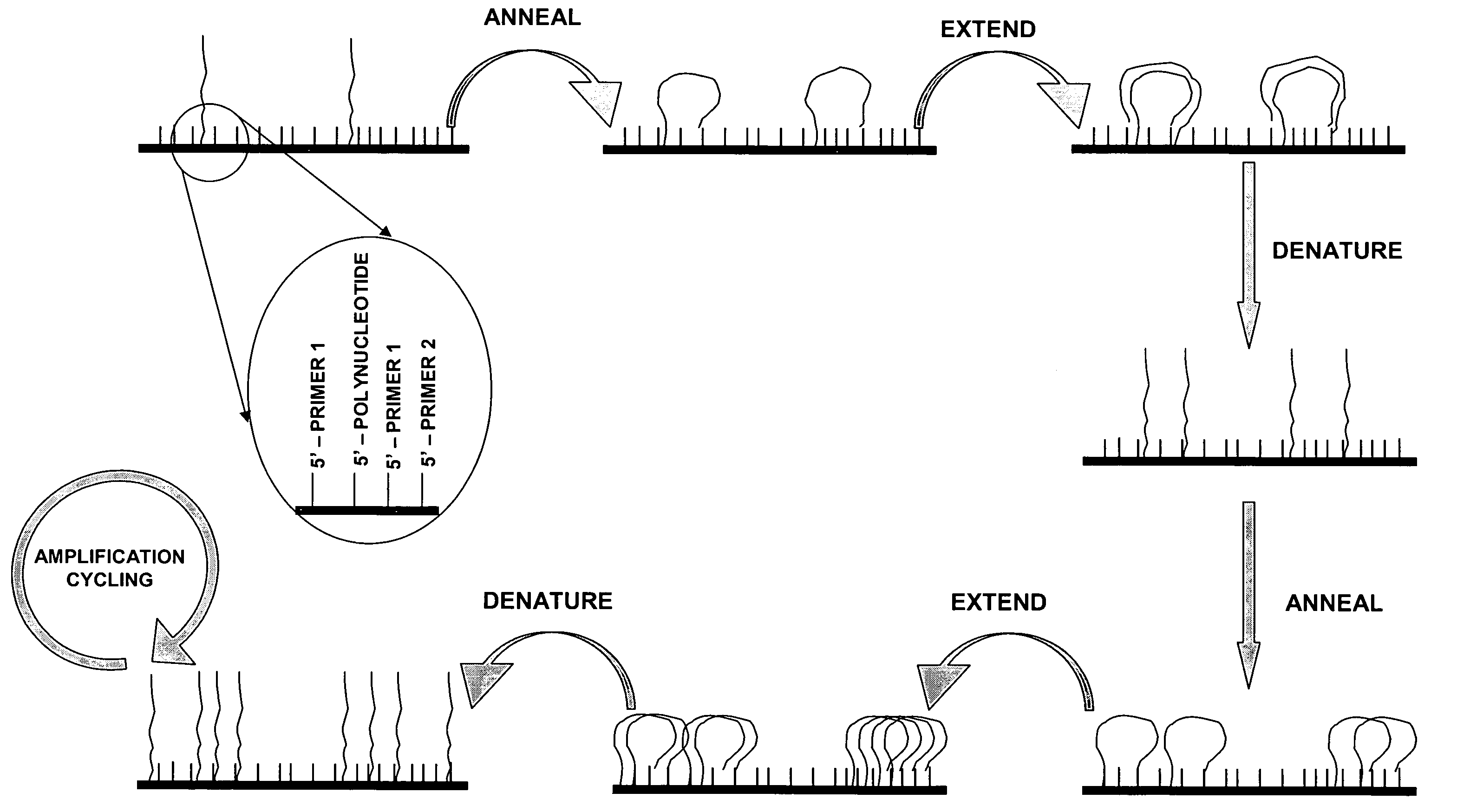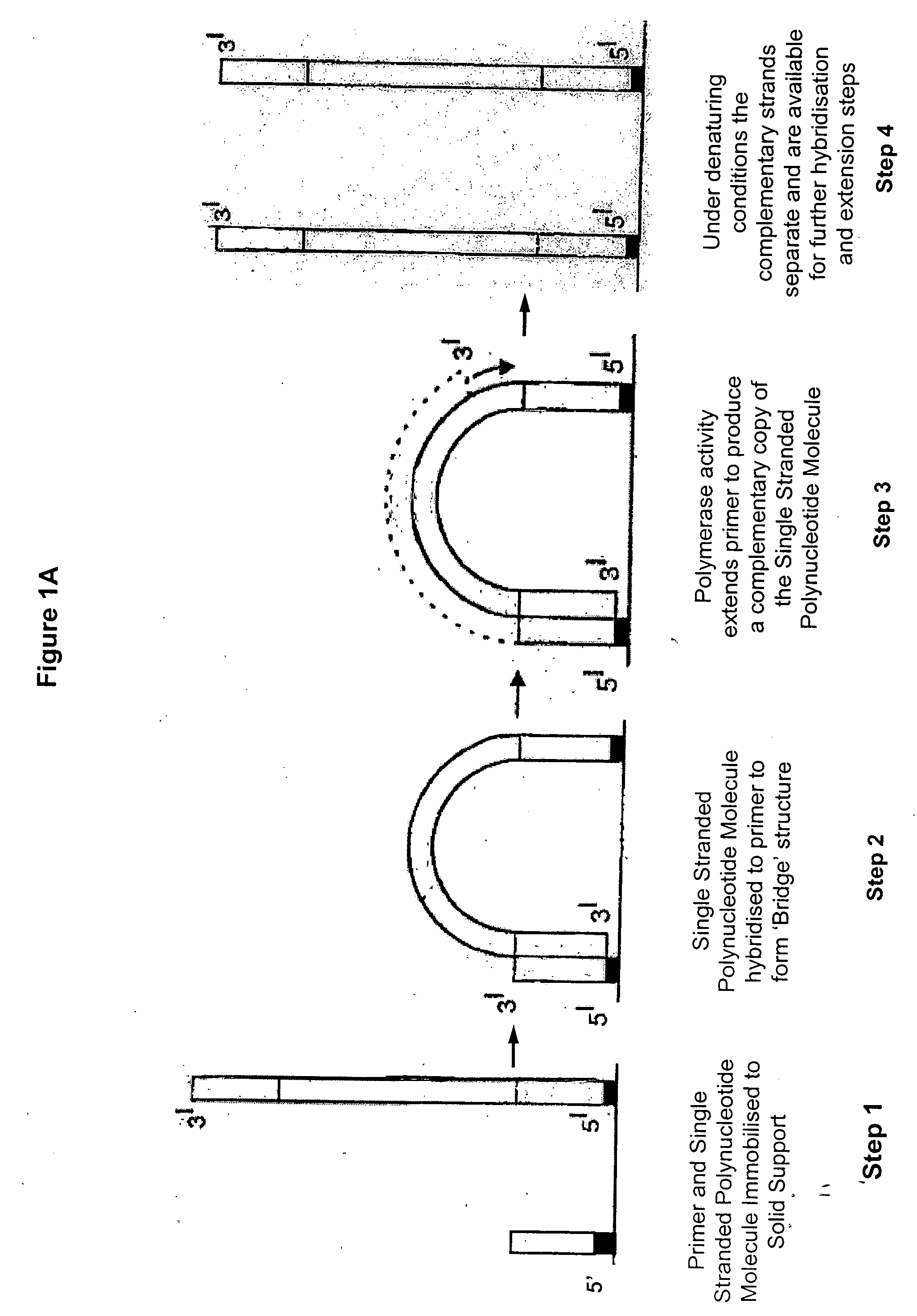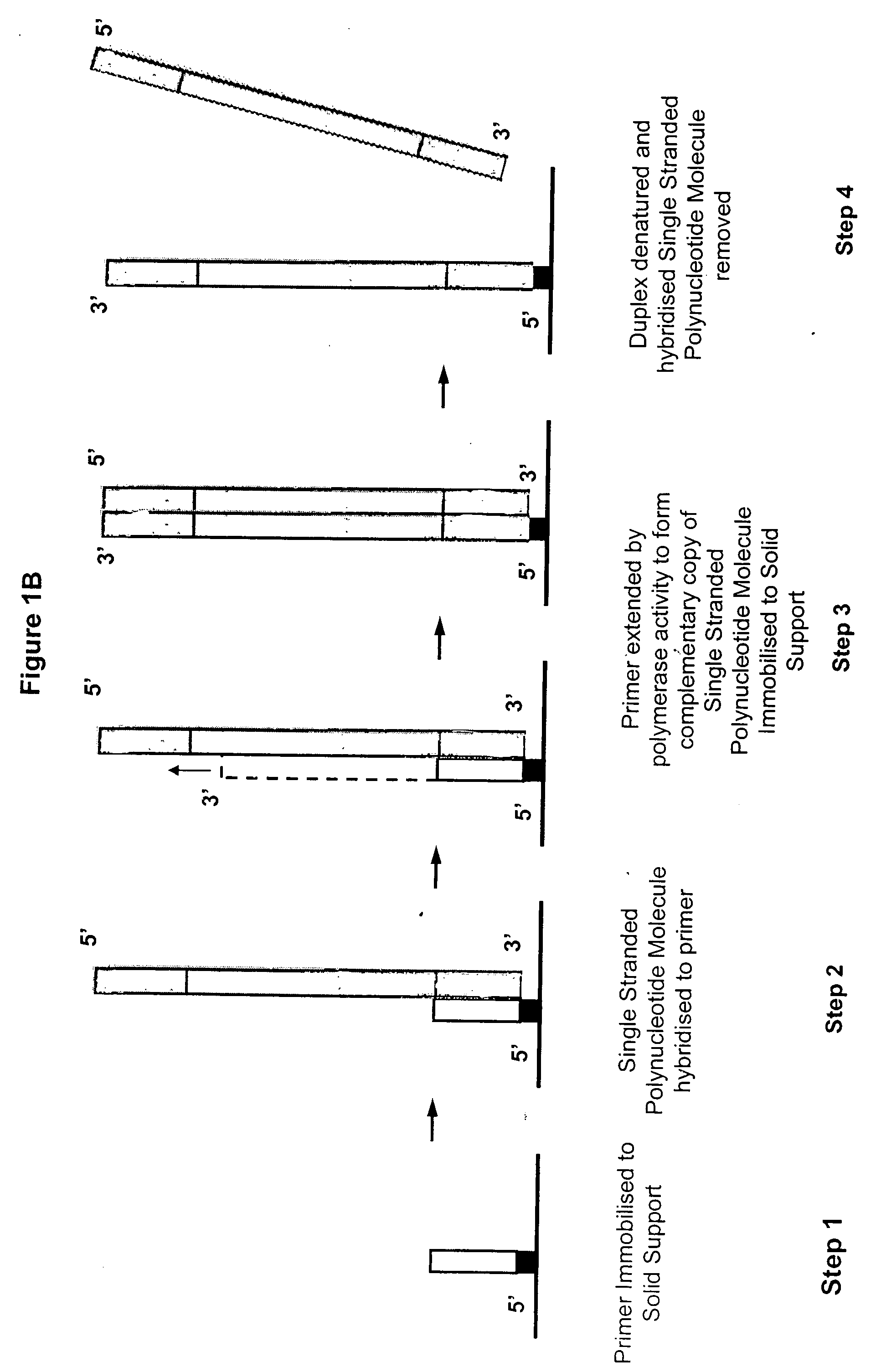Isothermal methods for creating clonal single molecule arrays
a single molecule array and isothermal technology, applied in the field of amplifying polynucleotide sequences, can solve the problems of increasing or decreasing the temperature of the reaction mixture, affecting the efficiency of thermocycling, and requiring expensive and specialised equipment, so as to facilitate isothermal amplification of a plurality of effects
- Summary
- Abstract
- Description
- Claims
- Application Information
AI Technical Summary
Benefits of technology
Problems solved by technology
Method used
Image
Examples
example 1
Comparison of Isothermal and Thermal Amplification
Experimental Overview
[0142] The following experimental details describe the complete exposition of one embodiment of the invention as described above. Preparation and sequencing of clusters are described in copending patents WO06064199 and WO07010251, whose protocols are included herein by reference in their entirety.
Acrylamide Coating of Glass Chips
[0143] The solid supports used are typically 8-channel glass chips such as those provided by Micronit (Twente, Nederland) or IMT (Neuchatel, Switzerland). However, the experimental conditions and procedures are readily applicable to other solid supports such as, for example, Silex Microsystems.
[0144] Chips were washed as follows: neat Decon for 30 min, Milli-Q® H2O for 30 min, NaOH 1N for 15 min, Milli-Q® H2O for 30 min, HCl 0.1N for 15 min, Milli-Q® H2O for 30 min.
Polymer Solution Preparation
[0145] For 10 ml of 2% polymerisation mix: [0146] 10 ml of 2% solution of acrylamide in...
example 2
Preparation and Sequencing of an Array of Isothermal Clusters Using Formamide Rather than Sodium Hydroxide
Grafting Primers onto Surface of SFA Coated Silex Flowcell
[0172] An SFA coated flowcell is placed onto a modified MJ-Research thermocycler and attached to a peristaltic pump. Grafting mix consisting of 0.5 μM of a forward primer and 0.5 μM of a reverse primer in 10 mM phosphate buffer (pH 7.0) is pumped into the channels of the flowcell at a flow rate of 60 μl / min for 75 s at 20° C. The thermocycler is then heated up to 51.6° C., and the flowcell is incubated at this temperature for 1 hour. During this time, the grafting mix undergoes 18 cycles of pumping: grafting mix is pumped in at 15 μl / min for 20 s, then the solution is pumped back and forth (5 s forward at 15 μl / min, then 5 s backward at 15 μl / min) for 180 s. After 18 cycles of pumping, the flowcell is washed by pumping in 5×SSC / 5 mM EDTA at 15 μl / min for 300 s at 51.6° C. The thermocycler is then cooled to 20° C.
[0173...
PUM
| Property | Measurement | Unit |
|---|---|---|
| temperature | aaaaa | aaaaa |
| pH | aaaaa | aaaaa |
| pH | aaaaa | aaaaa |
Abstract
Description
Claims
Application Information
 Login to View More
Login to View More - R&D
- Intellectual Property
- Life Sciences
- Materials
- Tech Scout
- Unparalleled Data Quality
- Higher Quality Content
- 60% Fewer Hallucinations
Browse by: Latest US Patents, China's latest patents, Technical Efficacy Thesaurus, Application Domain, Technology Topic, Popular Technical Reports.
© 2025 PatSnap. All rights reserved.Legal|Privacy policy|Modern Slavery Act Transparency Statement|Sitemap|About US| Contact US: help@patsnap.com



